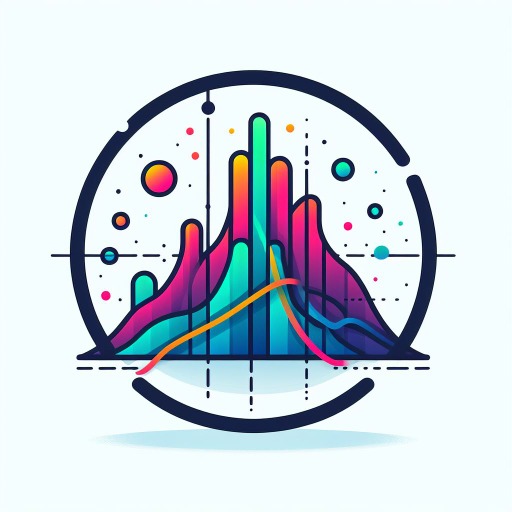4.2 Discusión - Analisis comparativo.-AI-powered document analysis.
AI-powered analysis for research documents.
Related Tools
Load More
Experto en comentarios
MCQ commentaries for ENAM

Tesis, trabajos universitarios, investigación
Este GPT's te ayudará en tus trabajos universitarios, buscará referencias bibliográficas en APA 7. Además su base de conocimiento está cargada con libros de metodología de la investigación

Análisis de Datos y Reportes IA +
Análisis de Datos IA le proporciona asistencia experta en el análisis de datos, incluyendo el manejo de datos, estadísticas descriptivas, análisis inferenciales y técnicas de análisis exploratorio
1.3. - Antecedentes
Sube el word o pdf del antecedente.

Analisis De Datos De Excel
Análisis de Datos con Inteligencia Artificial ofrece apoyo especializado en la exploración de datos, abarcando desde la gestión de los mismos hasta estadísticas descriptivas, análisis inferenciales y métodos de exploración de datos.

Experto en Estadística
Experto en estadística paramétrica y no paramétrica
20.0 / 5 (200 votes)
Introduction to 4.2 Discusión - Análisis Comparativo
4.2 Discusión - Análisis Comparativo is a specialized tool designed to assist researchers and analysts in conducting detailed comparative discussions and analyses of research findings. It focuses on synthesizing results from various studies or datasets, contextualizing them within theoretical frameworks, and providing a comprehensive interpretation that integrates statistical data and previous research. The tool is particularly useful for those who need to create cohesive narratives around complex data, such as in academic research or technical reports. For instance, if a researcher is comparing the economic growth indicators of two countries over a decade, 4.2 Discusión - Análisis Comparativo would help to systematically integrate the data, compare them against existing literature, and discuss the implications within a relevant theoretical context.

Main Functions of 4.2 Discusión - Análisis Comparativo
Comparative Analysis of Research Findings
Example
A researcher compares the impact of two different teaching methods on student performance across multiple studies.
Scenario
The tool guides the user in extracting statistical data such as means, standard deviations, p-values, and correlation coefficients from different studies, and then helps in discussing these findings in a structured way that highlights similarities, differences, and potential reasons for any discrepancies.
Contextualization within Theoretical Frameworks
Example
An economist is examining the effects of inflation on purchasing power in two different economic models.
Scenario
4.2 Discusión - Análisis Comparativo assists the economist in framing the comparative data within the context of economic theories, like Keynesian versus Monetarist views, ensuring that the discussion not only compares raw data but also interprets it through relevant theoretical lenses.
Integration of International and National Research Backgrounds
Example
A public health official is comparing vaccination rates and their impact on public health across two countries.
Scenario
The tool helps in pulling together background information from international and national sources, integrating it into the discussion in a way that supports a robust comparative analysis. This includes copying relevant results directly from the literature and ensuring that they are presented in a way that aligns with the user's analysis.
Ideal Users of 4.2 Discusión - Análisis Comparativo
Academic Researchers
Researchers in academia who are involved in complex data analysis and need to draw comparisons between multiple studies or datasets would greatly benefit from this tool. It helps in structuring their discussion sections, ensuring that all relevant data and theoretical perspectives are integrated comprehensively and cohesively.
Data Analysts and Economists
Data analysts and economists working on comparative studies of economic indicators, market trends, or policy impacts would find this tool invaluable. It aids in integrating statistical analysis with theoretical insights, ensuring that the discussion of results is both data-driven and theoretically sound.

How to Use 4.2 Discusión - Analisis comparativo.
Visit aichatonline.org for a free trial without login, no need for ChatGPT Plus.
Begin your journey by accessing the tool directly from the website, where you can explore its features without the need for any login credentials or a premium subscription.
Upload your document for analysis.
Once you’re on the platform, upload your Word document containing the research objectives, results, and theoretical background. This is essential for the tool to perform a thorough analysis.
Select your analysis focus.
Choose whether you want to analyze general objectives, specific objectives, or theoretical frameworks. The tool allows for targeted analysis based on your specific needs.
Review the generated content.
The tool will produce a detailed analysis including statistical interpretations, comparisons with international and national research, and theoretical contextualization. Carefully review the output to ensure it meets your requirements.
Export or refine your analysis.
After reviewing, you can either export the generated content to your preferred format or refine the analysis directly on the platform for more customized results.
Try other advanced and practical GPTs
Meta Ads Virtual Assistant
AI-powered real-time ads insights.

Metatron
AI-powered assistant for complex coding projects.

Product description and meta for Shoopify
AI-driven, witty product descriptions for Shoopify.

Master ACG (Anime, Comics/Manga, Game)
AI-powered insights for ACG enthusiasts

Sterling - Copywriter Senior
AI-Powered Marketing Content Creation
English / Spanish Translator
AI-powered English/Spanish Translation

SCI翻译
AI-Powered Scientific Translation Tool

Presentation to Script Generator
AI-powered presentation script generator

問題強調型LPライター
AI-powered Landing Page Creator

A CX Creative's 2nd Brain by Jeremybrady.design
AI-powered solutions for creative excellence

Video Hook Assistant
AI-powered hooks for captivating videos.

Ohho AI Stock MJ Prompt v3 retro-vintage
AI-powered retro image prompt generator

- Academic Writing
- Research Analysis
- Thesis Review
- Document Comparison
- Statistical Interpretation
Frequently Asked Questions about 4.2 Discusión - Analisis comparativo.
What type of documents can I analyze with 4.2 Discusión - Analisis comparativo.?
The tool is designed to analyze Word documents that contain research objectives, results, and theoretical frameworks. It works best with structured academic papers where statistical data is present.
How does the tool handle statistical data?
The tool integrates statistical data directly into the analysis by interpreting values such as PBI, EQ, t-Statistics, and more. It provides a comprehensive review, including the significance and correlation of these values.
Can 4.2 Discusión - Analisis comparativo. be used for non-academic purposes?
While the tool is optimized for academic research, it can also be used in any context where detailed analysis and comparison of results are required, such as market research or business reports.
Is there any limitation on the length of the document?
There is no strict limitation on document length, but for optimal performance, it is recommended to keep the document concise and well-structured, focusing on the sections that require analysis.
Does the tool offer real-time collaboration features?
Currently, the tool does not support real-time collaboration. However, you can export the analysis and share it with your team for further discussion and refinement.